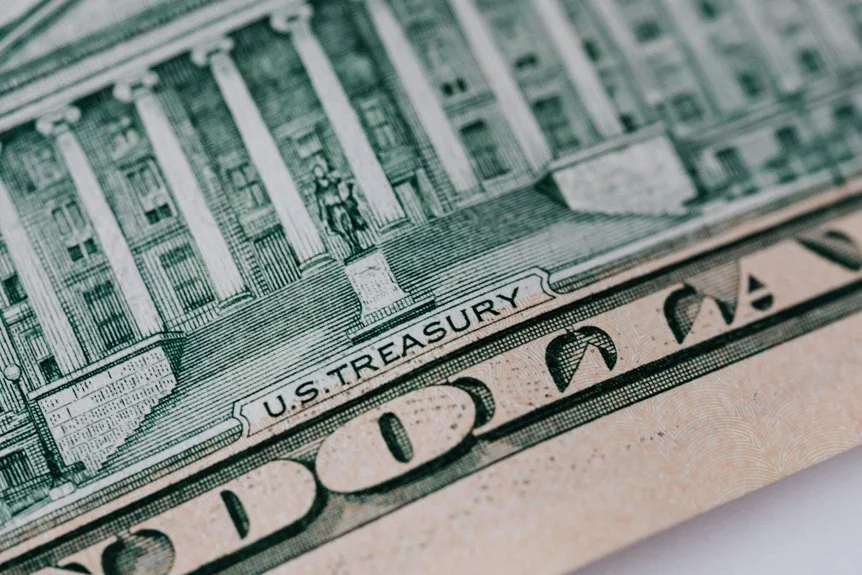
You’re probably bleeding money at home without even realizing it, and I learned this the hard way when my monthly bills hit $400 last winter. After digging through every expense, I discovered fifteen simple changes that slashed my costs by nearly 40% in just six months. From sneaky subscription charges to energy-wasting habits you’d never suspect, these strategies don’t require major lifestyle changes or upfront investments. The best part? Most people overlook the biggest money-drains completely.
Key Takeaways
- Switch to energy-efficient light bulbs and install dimmer switches to reduce electricity costs.
- Cancel unused subscriptions and review credit card statements to eliminate forgotten recurring charges.
- Learn DIY repair skills through YouTube tutorials to avoid expensive professional service calls.
- Repurpose old items like clothes into cleaning rags and refinish furniture instead of buying new.
- Grow your own herbs and vegetables while making homemade cleaning products with common ingredients.
Switch to Energy-Efficient Light Bulbs and Install Dimmer Switches
When I first started looking at my electric bill like it was personally insulting me, I realized those old light bulbs were basically tiny energy vampires sucking money straight from my wallet. You can slash your monthly electricity costs by up to 30% just by switching to energy-efficient halogen bulbs – that’s less money down the drain each month.
I ditched my incandescent bulbs faster than I throw away used paper towels, and installing dimmer switches gave me even more control over my electricity usage. Now I can lower your electric bill by adjusting brightness based on what I’m doing, whether I’m scrolling my cell phone or cooking dinner. These simple swaps costs way less than you’d think. To maximize your savings potential, use accounting software to track your monthly energy expenses and see exactly how much these changes are putting back in your pocket.
Maximize Kitchen Appliance Efficiency

Your kitchen appliances are probably energy vampires that’re secretly driving up your electric bill, but you can tame them with a few smart adjustments. I learned this the hard way when my monthly utility bill hit $180 last winter, and I realized my dishwasher’s heated dry setting was costing me about $15 extra each month.
The good news is that tweaking your appliance settings and keeping them well-maintained can slash those costs by 20-30%, which means more money in your pocket for the fun stuff. Just like how maintaining an ideal room temperature of 60-67°F helps optimize your sleep quality, keeping your refrigerator at the right temperature settings can significantly reduce energy waste while preserving your food better.
Use Energy-Efficient Settings
Since I started paying attention to how I use my kitchen appliances, I’ve managed to slash about $30 off my monthly electric bill without giving up my love for home-cooked meals. You’ll be amazed at how simple tweaks to your electricity usage can transform your energy efficiency game.
Your microwave becomes your secret weapon, consuming half the power of your oven for reheating and cooking smaller portions. Run your dishwasher only when it’s completely full, then use the air-dry setting instead of heated dry.
When you’re cooking on the stove, match your pot size to the burner – you’re literally throwing money away when heat escapes around oversized cookware. These energy-efficient habits add up faster than you’d think.
Maintain Appliances Regularly
Beyond adjusting your usage habits, keeping your appliances in tip-top shape can squeeze even more savings out of your monthly bills. Those dusty refrigerator coils you’ve been ignoring? They’re secretly draining your wallet. Clean them every six months, and you’ll boost energy efficiency while slashing utility costs. I learned this the hard way after my electricity bills skyrocketed last summer.
When your trusty appliances start showing their age, don’t just cross your fingers and hope they’ll last forever. Replace them with ENERGY STAR models that deliver up to 50% better energy efficiency. Sure, the upfront cost stings, but you’ll dramatically reduce electricity consumption and save money long-term. Think of it as an investment in your financial freedom, not just another expense.
Implement Water-Saving Strategies Throughout Your Home
Water bills have this sneaky way of creeping up on you, don’t they? Even when saving money feels hard, these small changes can cut costs faster than finding deals at the grocery store.
Start with a high-efficiency showerhead – it’ll slash your water usage by 40%. That’s like getting a better interest rate on deposits, but for your utility bill. Fix those dripping faucets ASAP; they waste 3,000 gallons yearly. Add faucet aerators to reduce flow by 30% without losing pressure.
Here’s the game-changer: install a dual-flush toilet converter. This little device saves 70% of flushing water. Set a shower timer too – you’ll save you money on both water and heating costs while keeping those lengthy shower daydreams in check.
Just like writing a business plan helps you identify potential risks and costs before they impact your bottom line, tracking your water usage patterns can reveal hidden inefficiencies that are quietly draining your budget.
Cancel Unused Subscriptions and Memberships
Your monthly subscriptions are probably bleeding your wallet dry faster than you realize, and it’s time to audit every recurring charge hitting your bank account. Start by pulling up your credit card statements from the last three months and highlight every automatic payment – you’ll likely find at least $30-50 worth of forgotten memberships lurking in there.
Once you’ve identified the culprits, don’t just cancel them blindly; call each company to negotiate better rates first, because many providers would rather keep you at a discount than lose you entirely. Consider redirecting those savings toward starting a home-based business that could generate additional income to further strengthen your financial position.
Audit Monthly Recurring Charges
Most of us rack up subscriptions like we’re collecting baseball cards, except these cards cost us money every single month. Time to take control and audit those sneaky charges draining your monthly cash flow.
Grab your credit card statements and hunt down every recurring charge. I found a $15 meditation app I’d forgotten about – that’s $180 yearly! Budget apps can help track these vampires automatically. Don’t forget streaming services; you’re probably paying for three when you only watch one.
Join loyalty programs that offer discounts on services you actually use. Watch your account religiously – set phone reminders to review statements monthly. Credit yourself with being smart enough to catch these money-drains before they multiply like rabbits.
Negotiate Better Rates
Now that you’ve spotted those subscription vampires, it’s time to grab your phone and start making some uncomfortable calls – trust me, your wallet will thank you later.
Here’s your game plan for crushing those monthly costs:
| What You’ll Say | What They’ll Hear |
|---|---|
| “I’m comparing prices” | “We’re losing a customer” |
| “Cancel my service” | “Offer them a discount” |
| “It’s too expensive” | “Find them a cheaper plan” |
| “I found better rates” | “Match their competitor” |
| “Downgrade my plan” | “Keep some revenue flowing” |
When negotiating rates with subscription services, mention competitor pricing and threaten cancellation. Most companies offer retention discounts rather than lose you completely. Ask about shared plans for family accounts, downgrade plans you don’t fully use, and eliminate monthly costs on unused services. Schedule membership renewals in your calendar to avoid automatic increases.
Maintain and Upgrade Appliances for Better Performance
When I finally looked behind my refrigerator last year, I discovered enough dust and pet hair to knit a sweater—and that gross buildup was costing me serious money. Cleaning those coils dropped my energy costs by 30%, which felt like finding cash in my couch cushions.
Your appliances need attention to slash maintenance costs and boost performance. Match pot sizes to your stove burners—you’ll cut cooking energy by 10%. Run your dishwasher only when packed full and skip the heated dry cycle to halve your water bills.
Ready to take control? Replace ancient appliances with ENERGY STAR models for 30% better efficiency. Use your toaster oven for small jobs instead of firing up the full oven—you’ll save 75% on energy. Consider using focus apps with timers while doing maintenance tasks to stay concentrated and complete the work efficiently.
Create a DIY Home Maintenance Schedule

You know that sinking feeling when your AC dies in July, and suddenly you’re staring at a $3,000 repair bill? Creating a preventive care schedule can save you from those wallet-crushing surprises by catching problems before they turn into disasters.
Learning basic DIY repair skills alongside your maintenance routine means you’ll handle simple fixes yourself, keeping more money in your pocket instead of handing it over to expensive service calls.
Use visual timers to transform overwhelming maintenance tasks into manageable 15-30 minute sprints, making it easier to stick to your schedule without feeling burned out.
Preventive Care Schedule
Creating a DIY home maintenance schedule might sound about as exciting as watching paint dry, but trust me, it’s one of those boring adult things that’ll save you serious cash. I started tracking my maintenance tasks last year, and the big savings shocked me – we’re talking $2,400 in avoided repairs.
Here’s your smart way to manage this: create monthly, seasonal, and yearly checklists. Monthly tasks include changing air filters ($15 versus $200 HVAC repairs), checking for leaks, and cleaning gutters. Seasonal maintenance covers furnace tune-ups and weatherproofing. This practical way to save requires just two hours monthly but delivers extra money back to your pocket. You’ll easily save each month by catching problems early and maximize your savings through prevention.
Start saving today.
DIY Repair Skills
Building on that maintenance schedule, learning basic repair skills transforms you from someone who panics at every creaky noise into a confident homeowner who actually saves money. This approach means devoting time upfront to master essential skills, but it’s a good idea that pays off quickly.
Here’s what you should tackle first:
- Plumbing basics – Replace faucet washers and unclog drains instead of calling professionals for $150+ visits
- Electrical fundamentals – Switch out outlets and light fixtures safely, saving $75-200 per job
- Drywall patching – Fix small holes yourself rather than paying contractors $100+ for simple repairs
- Caulking mastery – Seal windows and bathrooms to prevent costly water damage
Take advantage of YouTube tutorials, and make some adjustments to save anything you’d spend on physical money for repairs.
Optimize Your Home’s Heating and Cooling Systems
When I started looking at my energy bills last winter, I nearly choked on my coffee – $180 for January alone! That’s when I decided to take action and optimize my heating and cooling systems.
First, I installed a programmable thermostat. You’ll want to set aside around $100 for this upgrade, but know how much you can save – up to 10% per year. Next, I sealed air leaks around windows and doors with weatherstripping. This simple fix can slash your bills by 15%.
| Improvement | Cost | Annual Savings | ROI Timeline |
|---|---|---|---|
| Programmable Thermostat | $100 | 10% | 12 months |
| Weatherstripping | $50 | 15% | 6 months |
| HVAC Filter Changes | $60/year | 15% | Immediate |
| ENERGY STAR System | $5,000+ | 20% | 3-5 years |
Don’t forget regular filter changes – your budget may work better with this $5 monthly habit that facilitates the information flows freely through your system. While you’re optimizing your home for efficiency, consider updating your computer’s desktop background with seasonal themes to keep your workspace feeling fresh and boost your mood during those long hours spent managing your household budget.
Use Cash Instead of Credit for Household Purchases
When you’re wandering through Target for “just toilet paper” and somehow end up with $150 worth of seasonal décor, it’s time to ponder switching to cash for your household purchases. Using physical money creates a real psychological barrier that makes you pause before tossing that cute throw pillow into your cart, since you’ll actually feel those twenty-dollar bills leaving your wallet.
Plus, you’ll avoid racking up credit card debt on everyday items like groceries and cleaning supplies, which can quietly snowball into hundreds of dollars in high-interest charges each month. Consider putting those savings toward starting an online business, which could create additional income streams to further strengthen your household budget.
Cash Limits Impulse Buying
Since credit cards make spending feel almost imaginary, switching to cold, hard cash creates an immediate reality check that’ll transform your household shopping habits. When you’re holding actual bills, you’ll think twice before making impulse purchases because parting with physical money hurts more than swiping plastic.
- You can’t spend what you don’t have – No more overdraft fees or racking up debt when your wallet’s empty
- Physical counting slows you down – You’ll actually see how much less money remains after each purchase
- No tempting credit limits – Credit cards whisper “buy now, worry later,” but cash says “stop spending immediately”
- Lower interest rates become irrelevant – You’ll pay off debt faster when you’re not adding to it constantly
Cash guarantees you’re getting control back over your finances.
Physical Money Increases Awareness
Physical money doesn’t just limit your spending—it actually rewires how your brain processes every purchase, making you hyper-aware of where each dollar goes. When you use cash instead of credit cards, something powerful happens in your mind. Physically parting with it triggers real psychological pain, forcing you to evaluate every transaction.
I’ve seen people track their income and your expenses more accurately after switching to cash for just two weeks. Set clear and complete spending limits per week or per month based on your take-home pay. Watch how counting out twenty-dollar bills for groceries makes you reconsider that expensive cheese. Your brain suddenly connects spending with actual loss, creating natural awareness that credit cards simply can’t match.
Avoid Credit Card Debt
Credit cards turn household purchases into a dangerous game of financial roulette, where that $47 grocery run somehow becomes $73 because you grabbed extra snacks without thinking twice. Cash transforms you into a financial powerhouse by forcing intentional decisions at every purchase.
- Switch to cash for groceries – You’ll spend 12-18% less when you physically hand over bills
- Save spare change daily – That loose change adds up to $200+ annually in your savings account
- Eliminate high-interest payments – Credit cards charge 18-24% interest, but cash costs nothing extra
- Prioritize debt payoff – Attack your highest-interest credit card debt first to free up budget space
Your spending becomes mindful, your savings grow steadily, and you’ll avoid that soul-crushing interest burden.
Repurpose and Upcycle Items Around the House
Before you toss that pile of old clothes into the donation bin, take a moment to ponder the treasure trove of materials you’re about to give away. I’ve discovered that repurposing items beats anything in a bank when money is tough.
Convert those ratty t-shirts into cleaning rags, and you’ll slash your paper towel budget by $30 monthly. Transform mason jars into organizers instead of buying new containers for $15 each. That worn denim becomes a stylish tote bag, saving you $25 at retail stores. Glass bottles morph into decorative vases, eliminating costly home decor purchases.
Old furniture gets new life with $10 paint, rather than maxing out credit cards on replacements. These proven ways to save money require creativity, not consumer debt. If your upcycling skills develop into a passion, consider turning your creativity into income through freelance writing about DIY projects or offering design services to others looking to transform their spaces.
Grow Your Own Herbs and Vegetables

Three years ago, I planted my first herb garden and watched my grocery bills shrink faster than my basil plants grew. Growing your own herbs saves $20-$30 yearly, while a small vegetable garden produces $600-$800 worth of produce annually. You don’t need acres of land either – container gardening works perfectly for apartments and small spaces.
Here’s how to maximize your savings:
- Plant perennial herbs like rosemary, thyme, and sage that’ll keep producing for years
- Start composting your food scraps to create nutrient-rich soil for free
- Choose high-value crops like tomatoes, peppers, and leafy greens that cost the most at stores
- Begin with herbs since they’re easiest to grow and provide immediate grocery bill relief
Just like nurturing your plants requires patience and consistency, growing a successful garden takes time to yield the best results, but gentle care practices can lead to small changes with big rewards.
Your wallet will thank you every harvest season.
Make Your Own Cleaning Products
While fresh basil from my garden transformed my cooking, discovering homemade cleaning products changed my entire cleaning routine – and my budget. You’ll see how much you’d save when you make the topic of cleaning supplies part of your DIY strategy. My work has appeared to pay off – I’m spending 70% less on cleaners now.
Ensure you’re getting maximum value by mixing equal parts distilled white vinegar and water for windows and countertops. Baking soda combined with lemon juice creates a powerful scrub that tackles stubborn stains. Articles have appeared proving these combinations work just as well as expensive brands. This content is fact-checked for accuracy, and microfiber cloths replace costly disposable wipes perfectly.
Refinish Furniture Instead of Buying New
My neighbor’s $1,200 dining table purchase made me realize I’d been approaching furniture all wrong – especially when I spotted a nearly identical piece at a garage sale for $40.
Refinishing furniture saves you 50-80% compared to buying new, and honestly, it’s become my secret weapon against overpriced stores. You’ll spend maybe $20-30 on materials like sandpaper, stain, and sealant instead of hundreds on replacement pieces.
Refinishing furniture became my secret weapon against overpriced stores – saving 50-80% with just basic materials and elbow grease.
Here’s how to dominate furniture refinishing:
- Hunt thrift stores and garage sales for solid wood pieces with good bones
- Learn basic techniques through YouTube tutorials – they’re surprisingly simple
- Start with small projects like side tables before tackling bigger furniture
- Focus on repurposing damaged pieces that others overlook
You’re not just saving money; you’re creating custom pieces while keeping furniture out of landfills.
Landscape With Native and Low-Maintenance Plants
Just like finding treasure at garage sales, I discovered landscaping gold when I stopped fighting my yard’s natural tendencies and started working with them instead.
You’ll slash your maintenance costs by choosing native species that thrive in your local climate without constant babying. I replaced half my water-hungry lawn with drought-tolerant ground covers and perennials, cutting my water bill by $40 monthly.
Strategic mulch placement around plants keeps weeds at bay and locks in moisture, so you’re not constantly watering or weeding. Group plants with similar needs together—it’s like organizing your closet, but way more profitable.
Low-maintenance rock gardens eliminate mowing sections entirely. You’ll reclaim weekends while your bank account grows fatter.
Set Up a Home Office to Reduce Outside Expenses

Three years ago, I turned my spare bedroom into a home office, and it’s saved me over $2,400 annually in commuting costs, coffee shop visits, and eating out for lunch.
Converting my spare bedroom into a home office has delivered over $2,400 in annual savings from eliminated commuting and dining expenses.
You’ll maximize your savings by creating an energy-efficient workspace that cuts electricity costs too.
- Choose a laptop over desktop – it’ll slash your electricity usage by 80%, plus you can work anywhere in your house
- Position your desk near a window – natural light reduces your need for artificial lighting during daytime hours
- Plug everything into a SmartStrip surge protector – it automatically cuts phantom power when devices are off
- Buy ENERGY STAR equipment and enable power management features – you’ll reduce energy consumption by 30-60%
Automate Your Home to Reduce Utility Costs
While setting up your home office cuts costs, automating your entire home can slash your utility bills even further – I’ve reduced mine by 23% over the past two years using smart devices.
Start with smart thermostats, which’ll cut your heating and cooling costs by up to 15%. I installed mine last spring and immediately noticed the difference.
Smart light bulbs come next – schedule them to turn off automatically, because we all forget sometimes.
A smart power strip detects standby devices and cuts phantom power usage. Mine catches my sneaky electronics red-handed, saving me $12 monthly.
Automate watering systems to optimize outdoor water usage. Voice-control appliances through Amazon Alexa or Google Home for maximum efficiency. You’ll feel like a tech wizard while your wallet gets fatter.
Conclusion
You’ve got all the tools now to turn your home into a money-saving machine. Start with one or two changes that excite you most, whether it’s swapping those energy-hungry bulbs or finally canceling that gym membership you haven’t used since January. Don’t try everything at once, you’ll burn out faster than an old incandescent bulb. Pick your battles, track your savings, and watch those dollars add up month after month.





Pingback: 20 Easy Ways to Start Living Green Today